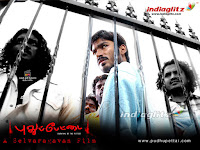Curating in a big way....
EAI IN TIMES SQUARE:
40 Years of Video Art
Electronic Arts Intermix (EAI) celebrates its 40th anniversary with a
special project for Times Square. In partnership with the Times Square
Alliance and MTV, EAI brings artists' visions to the MTV 44½ LED Screen.
Marking EAI's 40 years of support for moving image art, EAI in Times
Square celebrates video art's rich history of creative intervention in one
of the world's most dynamic media landscapes.
April 13 - 19, 2011
Noon - 4pm and 6pm - 11pm
Saturday & Sunday, April 16-17
Full program also plays at noon
MTV 44 ½ Screen
Times Square
Broadway between
44th and 45th Streets
New York, NY 10036
EAI partners with the Times Square Alliance and MTV to present artists'
video in the astonishing visual landscape of Times Square. From April 13
to 19, EAI will highlight the remarkable creative media interventions of
artists on a spectacular scale. Works by Vito Acconci, Dan Asher, Phyllis
Baldino, Dara Birnbaum, Gary Hill, Shigeko Kubota, Takeshi Murata, Nam
June Paik, Martha Rosler, Stuart Sherman and William Wegman will be seen
daily on MTV 44½'s large-format LED screen.
Drawn from EAI's archive, one of the world's leading resources for media
art, the videos will play at the top of each hour, between noon and 4pm
and between 6pm and 11pm. On Saturday, April 16 and Sunday, April 17 the
complete program (25:16 min) will also play at noon.
Spanning the 1960s to 2011, the works range from bold animations and
visual poems to witty performances and vibrant electronic experiments. Nam
June Paik's rarely seen Hand and Face (1961) is one of his earliest media
works; Dara Birnbaum's 30-second Artbreak was commissioned for broadcast
by MTV in 1987. Shigeko Kubota brings a profusion of electronic cherry
blossoms to the heart of Times Square, while Martha Rosler eyes domestic
labor in a suburban backyard. William Wegman's dogs perform a timeless
duet.
Each day's program will begin with Takeshi Murata's EAI 40th Anniversary
Intro (2011). Linking video art's history to the digital present, this
piece was specially commissioned by EAI for its 40th Anniversary
programming. Murata's video can also be viewed online at
http://www.eai.org/titleVideoLowRezExcerpt.htm?id=14755.
Much as early video artists sought to "slow down" television and "talk
back" to the media, these creative interjections will challenge viewers to
reconsider their visual expectations of Times Square and experience it in
new ways. Encountered on MTV's large-scale LED screen, these visions will
engage the public not just as consumers, but also as active viewers.
Times Square Alliance President Tim Tompkins said, "We're thrilled to
partner with Electronic Arts Intermix and MTV to support this diverse and
dynamic collection of videos through the medium that makes Times Square so
distinctive to people around the world: our billboards."
Program Schedule
Noon: Takeshi Murata, EAI 40th Anniversary Intro (2011, 1:05 min)
1 pm: Shigeko Kubota, Rock Video: Cherry Blossom (1986, 3 min)
2 pm: William Wegman, Dog Duet (1975, 2:37 min)
3 pm: Martha Rosler, Backyard Economy I (1974, 3:20 min)
4 pm: Stuart Sherman, Chess (1982, 30 sec)
6 pm: Dara Birnbaum, Artbreak, MTV Networks, Inc. (1987, 30 sec)
7 pm: Vito Acconci, Three Frame Studies: Push (1969-1970, 2:59 min)
8 pm: Nam June Paik, Hand and Face (1961, 1:25 min)
9 pm: Phyllis Baldino, Suitcase/Not Suitcase (1993, 36 sec)
10 pm: Gary Hill, Objects With Destinations (1979, 3:41 min)
11 pm : Dan Asher, Artificial Illuminations: Calligraphic (1997, 55 sec)
___________________________________
EAI in Times Square is part of an ongoing series of events and projects
marking EAI's 40th anniversary year. For more information about upcoming
programs in this series, please visit
www.eai.org.
___________________________________
About the Times Square Alliance
Times Square Arts presents temporary cutting-edge art and performances in
multiple forms and media to the 360,000 to 500,000 daily visitors to New
York City's Times Square, making it one of the highest profile public arts
programs in the United States. Since its inception three years ago, Times
Square Arts has featured works by a diverse group of more than four dozen
prominent and emerging artists. The Times Square Public Art Program is
made possible in part by the NYC Cultural Innovation Fund of the
Rockefeller Foundation, Rockefeller Brothers Fund and the NYC Department
of Cultural Affairs.
www.TimesSquareNYC.org/arts ___________________________________
About MTV 44½
A standout among the large electronic displays in Times Square, MTV 44½
captures the eyes of viewers with unique programming, live tapings,
special events, concerts, and MTV-branded creative that breaks through the
clutter in Times Square.
www.mtv445.com ___________________________________
EAI: Celebrating 40 Years
Founded in 1971, Electronic Arts Intermix (EAI) is one of the world's
leading nonprofit resources for video art. A pioneering advocate for media
art and artists, EAI fosters the creation, exhibition, distribution and
preservation of video art and digital art. EAI's core program is the
distribution and preservation of a major collection of over 3,500 new and
historical media works by artists. EAI's activities include viewing
access, educational services, extensive online resources, and public
programs such as artists' talks, exhibitions and panels. The Online
Catalogue is a comprehensive resource on the artists and works in the EAI
collection, and also features extensive materials on exhibiting,
collecting and preserving media art:
www.eai.org.
----







